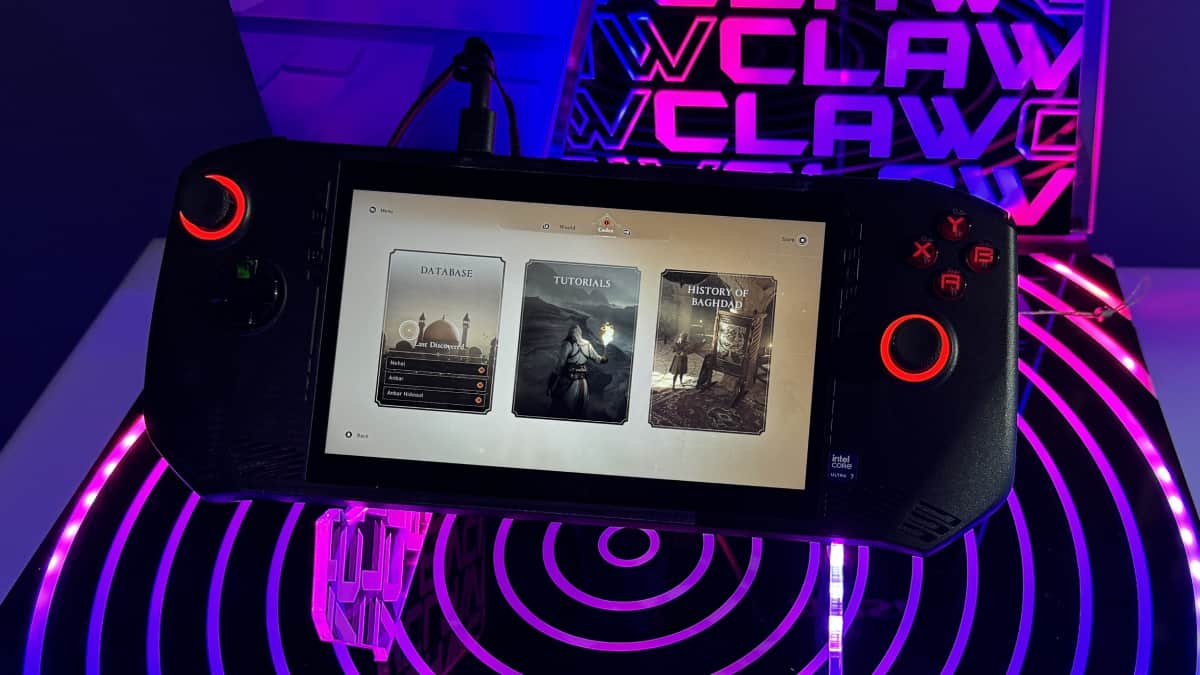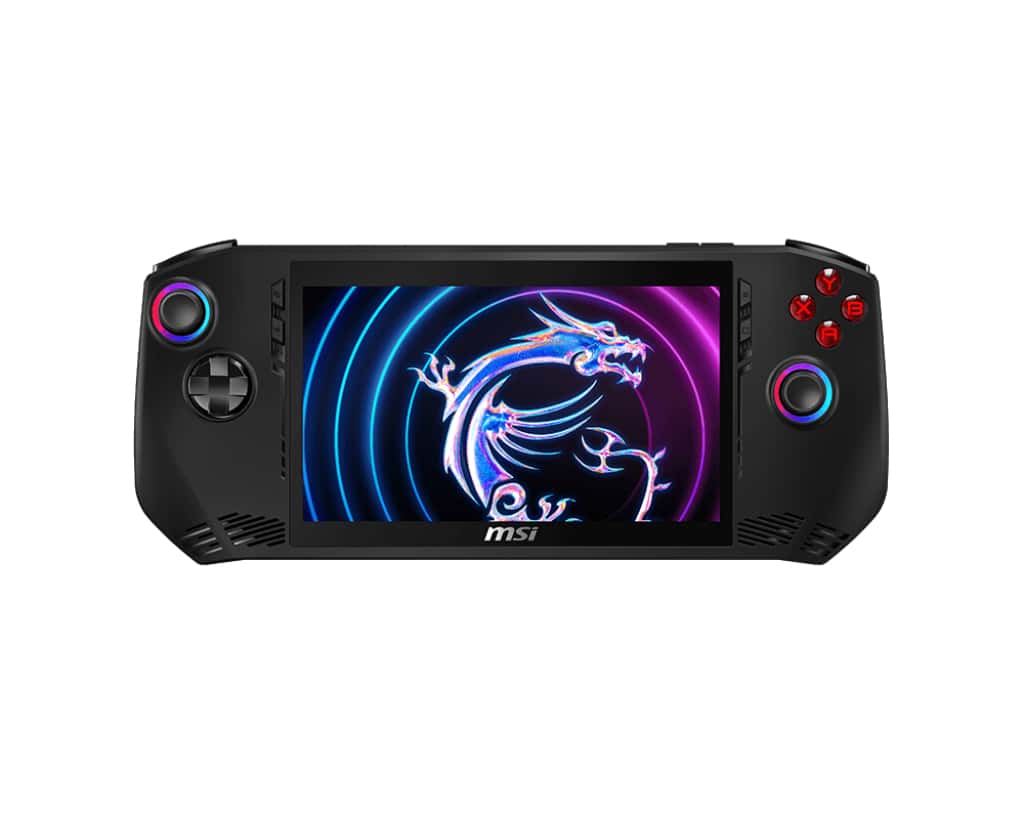I’ve tested the MSI Claw – it is underwhelming

Table of Contents
I’ve gone hands on with the MSI Claw extensively and now have a good idea of exactly what the Intel Meteor Lake and Arc-powered machine brings to the table. It’s a bold choice in a lot of ways with how it stands out from its AMD-powered contemporaries such as the Steam Deck, ASUS ROG Ally, and Lenovo Legion Go, but at this point, I’m not convinced that a change of architecture is enough of a USP given its price point.
MSI Claw price
Here’s where the handheld may struggle out of the gate, being the most expensive of the manufacturer-made handheld gaming PCs at $699 for the Core Ultra 5-135H variant and $799.99 for the Core Ultra 7-155H version, the latter of which doubles the available storage to 1TB. That positions MSI’s handheld at the same base price as the Lenovo Legion Go which launched to a mixed reception. Our sister publication VideoGamer has the full Lenovo Legion Go review for the full low down.
Enthusiasts likely aren’t going to see the pricing as too big a roadblock, but it’s worth bringing up the current market rates of the MSI Claw’s competition. Namely, the Linux-fuelled Steam Deck OLED which starts at $549, and the Windows-powered ASUS ROG Ally which recently had a price drop to $399.99 for the Ryzen Z1 variant and $599.99 for the Ryzen Z1 Extreme version; all of which are considerably cheaper than the MSI Claw’s base model. I’ll touch upon price-to-performance further down the page.
MSI Claw

Windows 11 OS
Up to Intel Core Ultra 7 CPU
Intel Arc Graphics
7-inch 1080p 120Hz IPS touchscreen
Up to 32GB LPDDR5 RAM
53Whr battery
MSI Claw design
In terms of its design, the MSI Claw is most reminiscent of the ASUS ROG Ally with its 120Hz 1080p display, twin hall-effect RGB analog sticks, and button placement, but it deviates in a couple of interesting ways. Namely, the face buttons themselves are fully RGB which changes alongside the lighting on the sticks, not only being backlit for playing in dark environments but also looking sharp, too. It’s possible to sync up the colors together or go for an asymmetric approach.
As for how the buttons, triggers, and bumpers feel – I am conflicted. The face buttons feel fine with low actuation and a satisfying click, but the D-pad leaves a lot to be desired. It feels lightweight in the hand and is responsive enough without feeling mushy, but lacks a good feel with its hard shiny plastic edges. Then we get onto the bumpers and triggers and these are a serious step down from the ones found on the Steam Deck OLED, ASUS ROG Ally, and even the Lenovo Legion Go – they don’t feel very good.
Even though the MSI Claw is technically a touch heavier than ASUS ROG Ally (607g) and Steam Deck OLED (639g) at 675g, it had a surprisingly lightweight feel to the chassis in the hand. For the bulk of my testing, I was able to pick the handheld up and walk around with it, never feeling the fatigue caused by the likes of the Lenovo Legion Go at a mammoth 854g. If you’re looking for a handheld to sling in a bag and use for hours on end then you shouldn’t tire with this one.

Further deep diving into the display, the MSI Claw features a 7-inch Full HD IPS-bonded screen with a peak brightness of 500 nits. It’s not the brightest handheld on the market, nor does it feature the highest resolution, but it looks good. You’re missing out on the peak brightness of 1000 nits, inky blacks, and vivid colors of the Steam Deck OLED, though. Put side by side with the ASUS ROG Ally, and genuinely these panels look about the same; equally as far from disappointing as dazzling.
As for the thermal performance, the MSI Claw was surprisingly chilled out neither getting loud nor hot in my playtime with the device. That’s due in part to the many outtakes and fans on the handheld, with a mesh grate on the back as well as the top of the unit. A spokesperson for MSI made it clear that the counteracting overheating was a key priority of its design and it appears to have achieved this goal. Now I can touch upon the performance capabilities.
MSI Claw gaming performance
In truth, it’s hard to gauge exactly how good the MSI Claw’s gaming chops are considering the rather limited list available which depended unit to unit in our showroom open floor demonstration. Starting with the most graphically and CPU-intensive games first, one handheld was running Assassin’s Creed Mirage in a custom graphics preset which hovered around the 60fps mark which is particularly impressive given the fact that the game is only a few months old. However, the game is later slated to come to iPhone 15 Pro, which hinders the wow factor slightly.
Another unit was running Resident Evil 3 remake at around 60fps in high settings at 1080p which is something worth commending. Despite being a couple of years old, the title still holds up visually with some good lightning effects and solid texture work, were it not for the random acts of slowdown where shaders were being compiled, a common problem across all units I tested. While this was more noticeable in more demanding games, it was disappointing to see this happen in older games.
Some MSI Claw units I went hands-on with were running old and frankly unimpressive-looking games, and sometimes not even particularly well. This was particularly noticeable with Tekken 7 and Rayman Legends, both excellent games in their own right, but software that’s far from pushing the boundaries of the hardware. It felt like a deliberate choice from MSI to feature titles that wouldn’t cause the Intel Arc integrated graphics to sweat much, and similar can be said for Sunset Overdrive, too, nearing a decade old apiece.

The choice of games may not have given the best impression but things were far from unplayable. For example, Prince of Persia: The Lost Crown from earlier in the year was on the docket and looked and ran well. But that’s not entirely impressive given the cell-shaded 2.5D art style as it looks as though the best gaming phones could also achieve the same feat. It would have been good to see some Xbox Game Pass, Epic Games, GOG Galaxy, and more demanding Steam titles at the ready to flex the Claw’s power.
Then there’s the MSI Center M software which can be used to launch games from different storefronts such as Steam, Ubisoft Connect, GOG, EA, Battlenet, and Xbox Game Pass. From the limited selection available to me, it worked well without the need of going into desktop mode. The same software can also be used for on the fly tweaks such as power management, alternating resolution, refresh rate, etc. These features are nothing new to handheld gaming PCs, but they work well enough.
Lastly, to touch on the battery life, the MSI Claw features a 53Whr battery which is larger than the 40Whr, 49.2 Whr, and 50Whr batteries found in the ASUS ROG Ally, Lenovo Legion Go, and Steam Deck OLED respectively. I was at the event for a fair few hours with some of the handhelds running purely on battery power and none went flat throughout the testing window. However, it’s unknown exactly how long the handheld will be able to run depending on gaming intensity, refresh rate, brightness, etc. I’ll bench in my full review.
Conclusion

Ultimately, while it’s hard to judge, this is the best foot forward that the manufacturer led with at this event. Yes, the MSI Claw can confidently play older and less demanding games, but where’s the wow factor? Even after playing with a range of devices for the afternoon, I’m left ultimately underwhelmed. Then the price factors in again, simply put, you’re going to be paying more for the MSI Claw’s cheapest version than a Steam Deck OLED and ASUS ROG Ally which could offer better value for money.
This could change when I get my hands on a dedicated review unit that I can spend weeks with as with the Lenovo Legion Go, Steam Deck OLED, and ASUS ROG Ally. There’s no faulting what MSI has tried to do here in building a machine that confidently takes advantage of the new Intel Meteor Lake CPUs and Arc graphics, but it appears as though it wasn’t confident enough to let its handheld be stress-tested here. Hopefully, when a unit is provided for me my mind will be changed, until then, I am unconvinced.
When will the MSI Claw come out?
The MSI Claw is available now through MSI directly in the US or through retailers such as Best Buy. It’s availability in the UK and other territories appears to be less clear, however, pre orders are available directly from the manufacturer.
What size SSD is in the MSI Claw?
The MSI Claw will ship with three variants, one running the Intel Core Ultra 5 with a 512GB SSD and the others with an Intel Core Ultra 7 choices of either a 512GB or 1TB SSD. If you’re planning on building a large gaming collection then you’ll want to opt for the latter offering.










